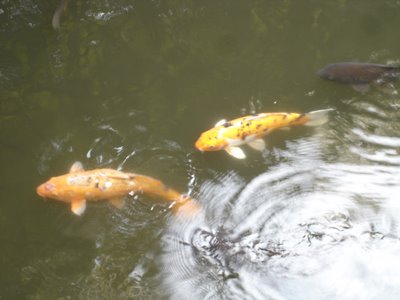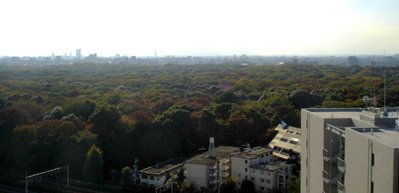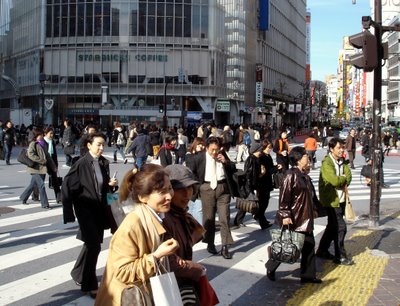Not everything in Tokyo is hustle and bustle. We stopped briefly Saturday in the large park around Meiji Shrine. The shrine and land were donated by the family of Emperor Meiji, who re-opened Japan to the West in the 1800s, and passed away in the early 1900s.

Most of the park is wooded. It was relaxing to walk along under the trees, and interesting to see so many species with which we are unfamiliar. The pavement on the path was the only hint that we weren't deep in the wilderness. Our route paralleled the north boundary of the park.

Most of the park is wooded. It was relaxing to walk along under the trees, and interesting to see so many species with which we are unfamiliar. The pavement on the path was the only hint that we weren't deep in the wilderness. Our route paralleled the north boundary of the park.

After some time, we came to an open area surrounding the "Treasure museum," a large structure housing the personal effects of the emperor and his daughter. It was closed, but we spent some time at some nearby koi ponds. The fish were as large as the ducks.

There were a number of people about, but it was not at all crowded; just a few folks enjoying the pleasant day. I realized that one of the buildings in the distance was my workplace.

Another day we'll come back here. This is a big park, and there's much more exploring to do.









